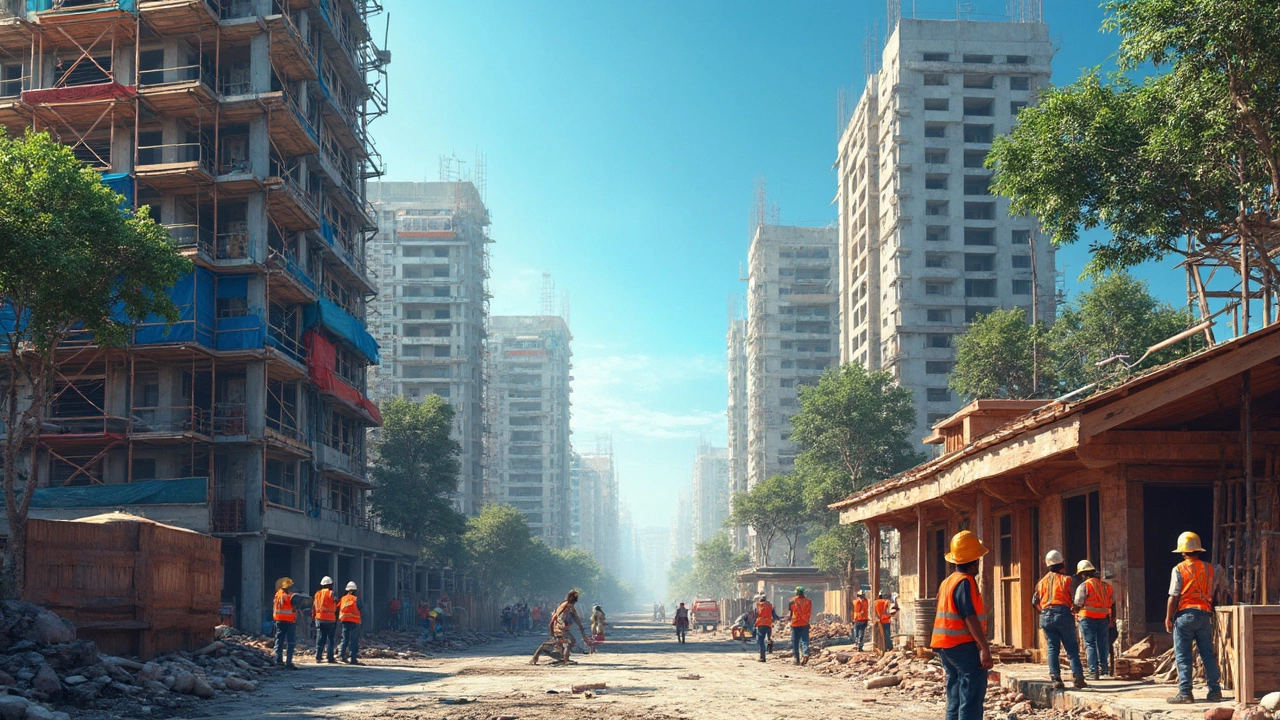Steel in Construction: Types, Uses, and Why It Dominates Modern Building
When you see a skyscraper, a warehouse, or a bridge, what you’re really seeing is steel, a high-strength alloy of iron and carbon that forms the structural skeleton of most modern buildings. Also known as structural steel, it’s the reason buildings can reach hundreds of feet tall without collapsing under their own weight. Unlike wood or concrete, steel doesn’t warp, rot, or crack easily. It’s fire-resistant when properly treated, recyclable, and can be shaped into beams, columns, or trusses to fit almost any design. In commercial construction, steel isn’t just common—it’s the default choice for anything that needs to hold up heavy loads, span large distances, or stand up to extreme weather.
Steel framing is the standard in warehouses, factories, and retail centers because it’s faster to install and more precise than pouring concrete. It also allows for open floor plans—no need for thick load-bearing walls. In residential projects, steel is gaining ground too, especially in areas prone to earthquakes or high winds. You’ll find it in roof trusses, foundation supports, and even as a replacement for wooden studs in high-end homes. Structural steel, the specific grade used in building frameworks, comes in standardized shapes like I-beams, channels, and angles, each chosen for its load-bearing capacity. It’s not just about strength—it’s about predictability. Engineers know exactly how much weight a 6-inch steel beam can carry, which makes planning safer and cheaper.
Steel’s role in construction goes beyond just holding things up. It enables innovation. Pre-engineered metal buildings, which use steel frames with insulated panels, can be assembled in weeks instead of months. Tilt-up concrete walls often rely on steel reinforcement to prevent cracking. Even in renovations, steel beams are added to strengthen older structures without tearing them down. Commercial construction, a sector where speed, durability, and code compliance are non-negotiable, relies heavily on steel for its scalability and long-term value. If you’re building or renovating, steel might be the smartest material choice you make—especially if you’re thinking long-term.
But steel isn’t perfect. It can rust if not coated properly. It conducts heat, so insulation is critical. And while it’s strong, improper installation can lead to failure—something you’ll see in posts about foundation repairs and building codes. That’s why knowing the difference between galvanized steel, stainless steel, and structural steel matters. You don’t just pick steel—you pick the right kind for the job.
Below, you’ll find real-world guides on how steel is used in different building types, what codes require, how it compares to concrete, and why some builders choose it over everything else. Whether you’re a homeowner planning a renovation, a contractor evaluating materials, or just curious about how buildings stay up, these articles cut through the noise and give you what you actually need to know.
Construction Materials: The Big Three You Can't Ignore
Curious about what really holds up our buildings? This article breaks down the three main construction materials—concrete, steel, and wood—explaining why they matter and where you see them every day. You'll get practical tips on picking the right material for your project and learn some surprising facts that could save you time and money. Perfect read if you're stepping into construction or just want to know what that house down the street is made of. The info here is clear, straight-up, and super handy for anyone interested in how stuff gets built.
Learn more...